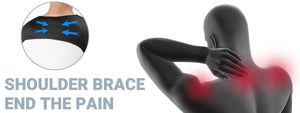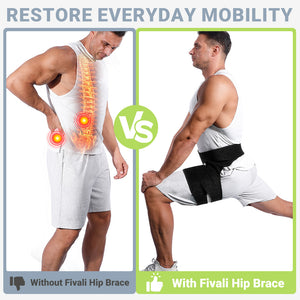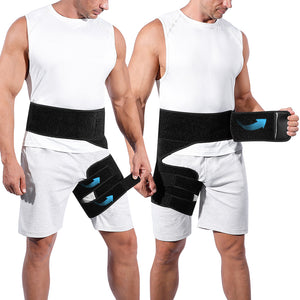How Does a Tennis Elbow Brace Work?

This post will explain how a tennis elbow brace works. It begins with a brief definition of tennis elbow, its main symptoms and causes. Following that, the article gets into a full overview of how a tennis elbow brace works to relieve discomfort and improve recovery.
The aim of this article is to contribute practical advice on the purchase and wearing of protective gear for people with tennis elbow, emphasising that choosing the right protective gear and knowing how to wear it correctly is essential for the treatment and prevention of tennis elbow.
Understanding the Tennis Elbow
Tennis elbow, also known as posterolateral epicondylitis, is usually the result of repeated movement or overuse of the muscles as well as tissues of the forearm are involved. The major cause is repeated contraction of the forearm muscles, which adhere to a bony protrusion on the outside of the elbow. The repetitive pressure can causes tiny tendon tears, which can lead to both inflammation and pain. Tennis elbow, despite its name, can also develop in people who don't play tennis but perform repetitive gripping activities (such as typing, drawing or playing a musical instrument).
Tennis elbow is characterised by discomfort and soreness on the outside of the elbow. This pain may radiate down the forearm and intensify during a gripping or raising movement. Other signs and symptom can include:
- The injured arm is weak.
- Difficulty grasping objects or carrying out simple tasks.
- Elbow joint stiffness or discomfort.
- When extending or straightening the wrist, there is pain.
- Pain that is exacerbated by repetitive motions or activities.
It is of great importance to recall that the magnitude of these complaints may differ in strength and will develop gradually over time. If left untreated, tennis elbow complaints may remain and disrupt routine events.
How a Tennis Elbow Brace Works
A tennis elbow brace works to relieve pain and support the afflicted area through many mechanisms:
- Compression: The brace relieves swollen and irritated forearm tendons and muscles by applying gentle compression to them. With compression therapy, blood circulation is speeded up, which in turn promotes tissue repair, reduces the inflamed response, resulting in better healing conditions as well.
- Tendon Support: Providing support to the tendon, the brace effectively relieves pressure on the compromised area, thus precluding secondary injuries, and prevents hyperextension by providing a stable environment for the tendon, promoting proper healing, and diminishing hyperextension and extensibility during activation.
- Muscular Relief: The support confines the activity of the musculature of the forearm and releases the tension in the affected area. It relieves pain and suffering associated with tennis elbow by reducing motion.
- Stability: The brace stabilises the knuckle of the elbow, preventing overuse and further injury. It works to help preserve appropriate alignment and decreases the risk of the problem deteriorating during physical activity at all.
- Pain Reduction: This brace combines the three functions of compression, support and stabilisation to relieve the pain caused by tennis elbow. The brace also supports the release of hormones in the body, which is a natural pain relief material that further minimises discomforts that occur.
While a tennis elbow brace can provides brief relief and support, this is not a solution to the tennis elbow problem at hand. To assure the most appropriate diagnosis and the most optimum treatment plan, it is advised that you consult a healthcare professional. Therapies may include involved procedures such as stenting, as well as a combination of restrictions such as rest, physiotherapy and painful management.
Types of Tennis Elbow Braces

Fivali Tennis elbow braces come in a variety of styles, each designed to provide support and uniquely reduce discomfort. Some examples are as follows:
- Counterforce Brace: This is the most frequent type of tennis elbow brace. It is made up of a strap or band that is wrapped around the forearm, right below the elbow. It puts pressure on the muscles and tendons, compressing them and relieving strain on the damaged area.
- Elbow Sleeve: An elbow sleeve is a snug-fitting neoprene or similar material garment. It wraps around the entire elbow joint, providing compression and warmth to aid healing and pain relief. For targeted support, some elbow sleeves may have additional straps or padding.
- Wrist Extensor Brace: This brace is designed to support the wrist extensor tendons, which are typically afflicted by tennis elbow. It usually consists of a strap that wraps around the forearm and a pad that sits on the muscles near the elbow. This design aids in the distribution of forces away from the affected tendons.
- Dual Strap Brace: A dual strap brace combines the benefits of a counterforce brace and a wrist extensor brace. It comes with two adjustable straps, one for applying pressure to the forearm muscles and tendons and the other for supporting the wrist extensor tendons. This design offers extensive assistance in both areas.
A healthcare practitioner may propose a custom-fit brace in some circumstances, which is precisely constructed to fit the individual's forearm shape and size. These braces provide a customized fit and optimal support for individual demands.













